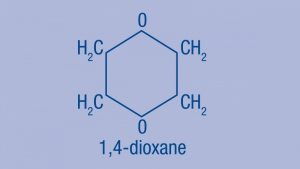Long Island’s groundwater has recently been reported to contain elevated levels of 1,4-dioxane. As discussed in Walden’s recent blog, “How will the 1,4-Dioxane in my Drinking Water Affect my Health?“, 1,4-dioxane, a probable cancer causing chemical, has been detected in drinking water at concentrations exceeding health based levels. What are the origins of 1, 4-dioxane contamination? How did it pollute our water supply? The answer lies in Long Island’s past. 1,4-dioxane has historically been used for industrial, agricultural, and manufacturing practices on Long Island.
Long Island receives its’ drinking water supply from a sole source aquifer system. This means that all water used for drinking, cooking, and bathing comes directly from the ground below Nassau and Suffolk Counties. Often when chemicals get released into Long Island’s groundwater it is through accidental spills or leaching through septic systems. When substances enter the ground, they are driven downward by forces such as gravity and precipitation, creating the potential for these chemicals to contaminate Long Island’s drinking water.
The presence of 1,4-dioxane in Long Island’s drinking water is likely due to products entering the subsurface and leaching into the groundwater over time. Historically, Nassau County and western Suffolk County were host to many industrial and agricultural operations. 1,4-dioxane is commonly used as a solvent in manufacturing and industrial processes, as well as a stabilizer for chlorinated solvents. 1,4-dioxane has also been used as a purifying agent in the manufacture of various pharmaceuticals, and is a byproduct of polyethylene terephthalate (PET) plastic manufacturing. In the agricultural industry, some pesticides contain 1,4-dioxane as a solvent or inert ingredient. Other products that contain 1,4-dioxane include, but are not limited to: paints and dyes, paint strippers, cleaners, varnishes, waxes, cosmetics, deodorants, and shampoos.
The New York State Department of Environmental Conservation and the New York State Department of Health are taking steps to ensure that drinking water is protected from impacts associated with 1,4-dioxane and other contaminants. Walden will continue to track developments related to 1,4-dioxane.
If you or your business has any questions regarding 1,4-dioxane contamination in drinking water, as well as testing and treatment options, please call Walden Environmental Engineering at (516) 624-7200.
